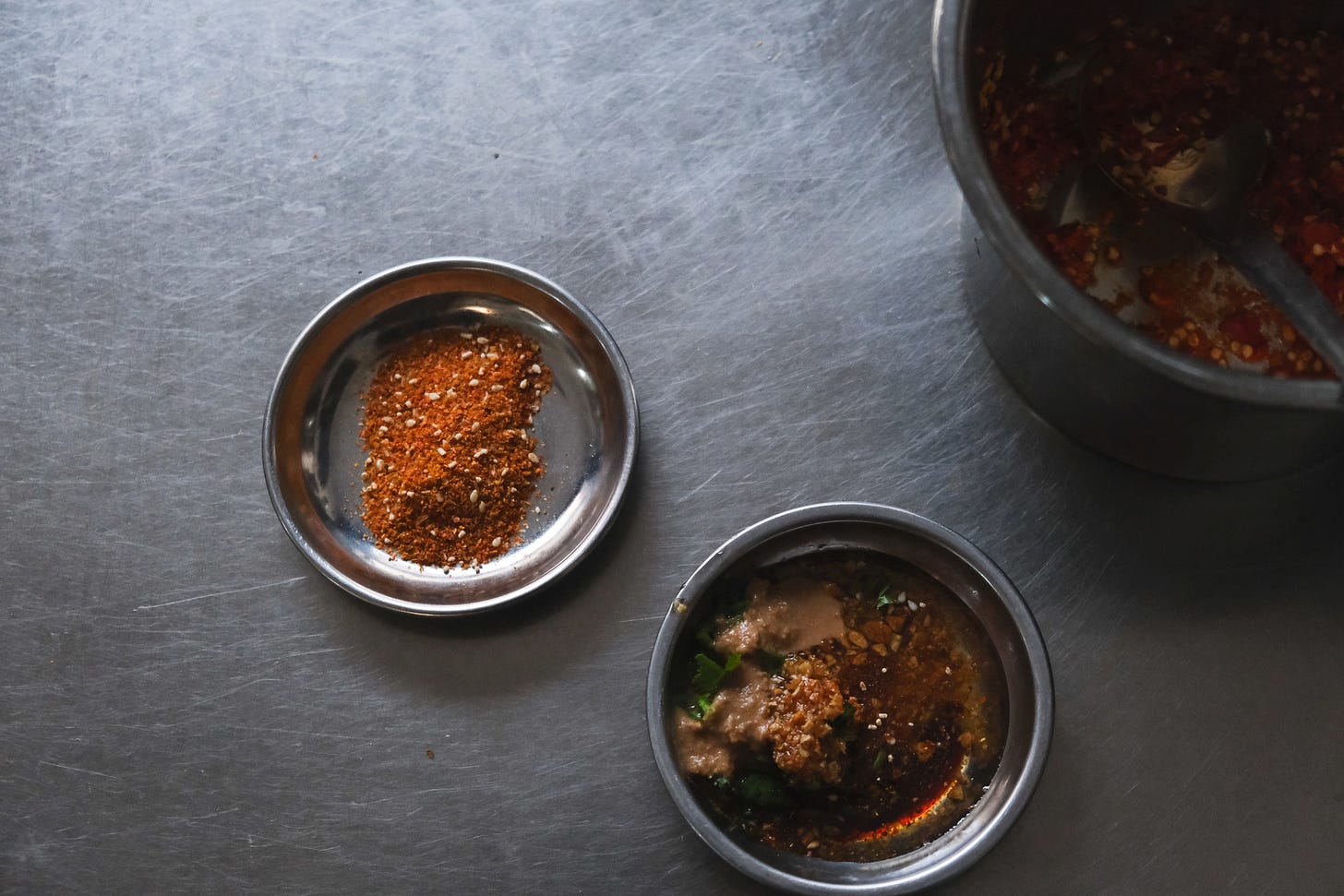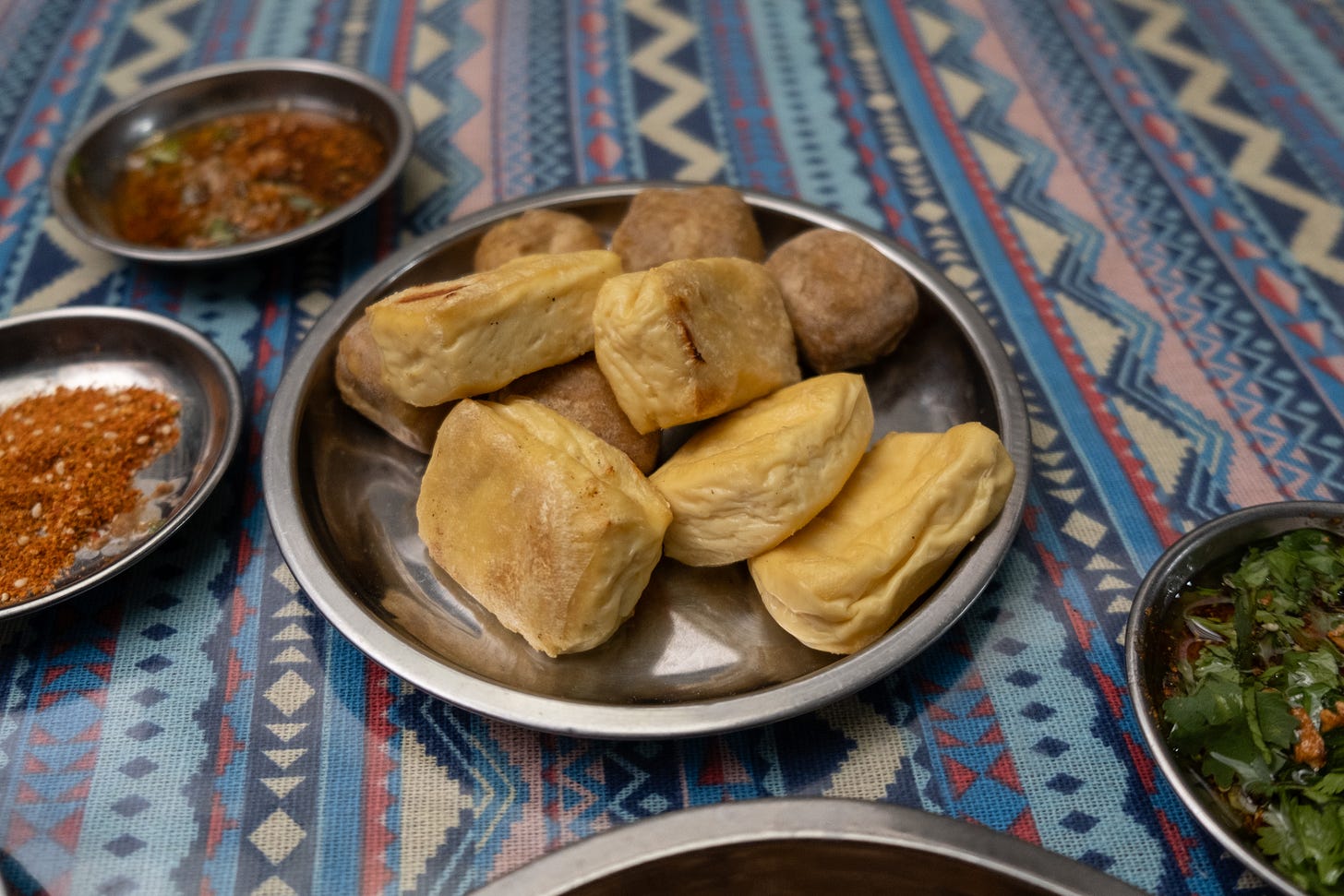In my opinion the best time to go out for barbecue in Yunnan is right before dusk. The sun is low and slipping away but there’s still enough light to see the grilling food and the distant mountains. Smoke rises and night falls. With each hour more people gather around tables at the shaokao joints, and as the evening wind picks up, the late-night snackers start to arrive, a tipsier bunch.
In Dali, the owner at my favorite barbecue place (正宗开远米线) grills just five items: baojiang tofu, stinky tofu, sweet potato and potato chunks, and eggs cracked into little stainless steel dishes, cooked sunny-side up. He adjusts the height of the grate with a lever beneath his feet. More people join with their friends until the table is full. The rest have to wait outside. We sip cold beer and wait for the food to cook in silence, watching the owner turn pillowy tofu and chunks of potato over the coals with the same reverential, rapt attention of diners at an omakase meal.
“Can I have a piece of tofu?” someone says finally, holding out their plate. “No it’s not ready yet,” he responds. “Three minutes.”
When he deems a piece ready to eat, he will place it in front of you. You thank him with a nod, pick up the morsel and dip it in your plate.
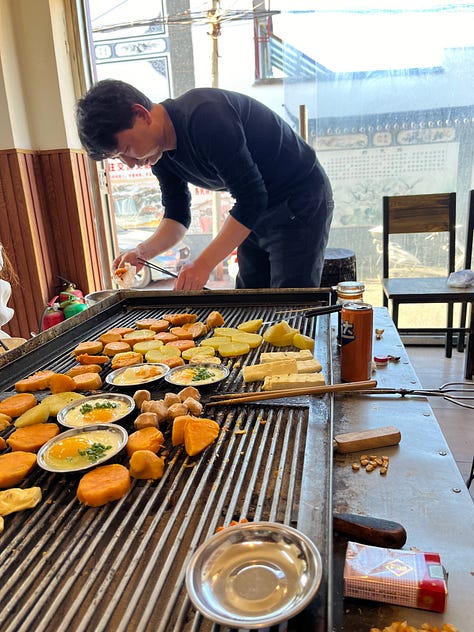
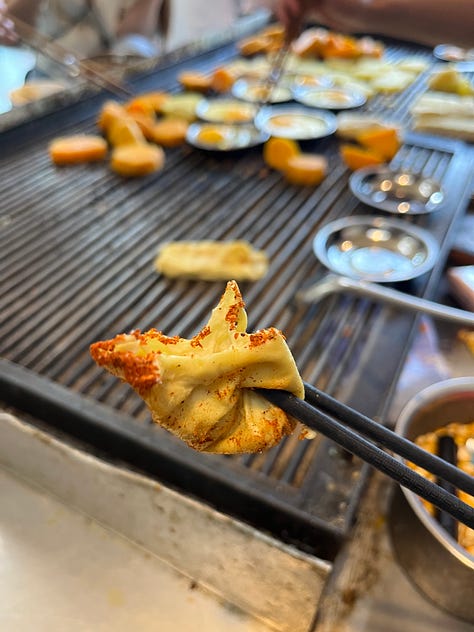
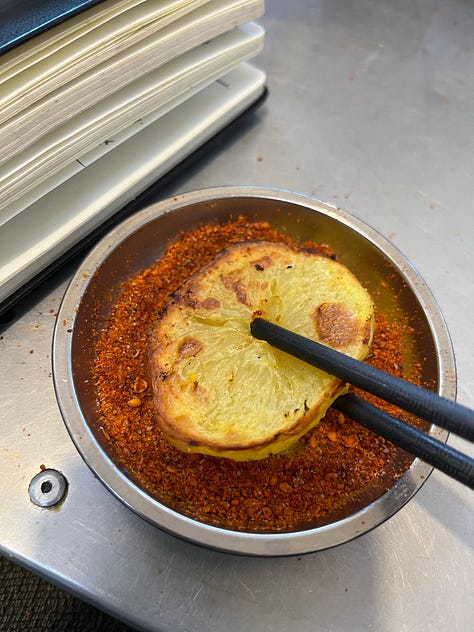



He keeps track of how much you eat with kernels of corn, heaping a little pile for each person on the table and sweeping it into his palm when you’re ready to pay. The tofu and chunks of sweet potato and potato run 0.8 to 1.5 yuan apiece. You can also order bowls of rice noodle soup, Yunnan mixian, to fill your stomach as you wait.
Most barbecue places offer more than just tofu and potatoes. At 姚家烧烤 in Jianshui, you can order from a full menu of dishes, or peruse the skewered vegetables and meats in the refrigerated display case. I look past the flags of trailing garlic chives, okra, eggplant, zucchini, and beans, and select the unusual ones: oyster mushrooms overlapping like ears, lotus root stuffed with sticky rice and sliced into rounds, glutinous corn kernels pierced like a candy necklace, napa cabbage hearts, and gluten (seitan) rolls cut into a spiral. The vendor brushes garlic oil over each crevice and flings on salt and dry spice from a shaker, perfectly seasoning the skewers as they grill over the hot coals. The lotus root is sticky crisp with glutinous rice and caramelization and I’m in heaven.
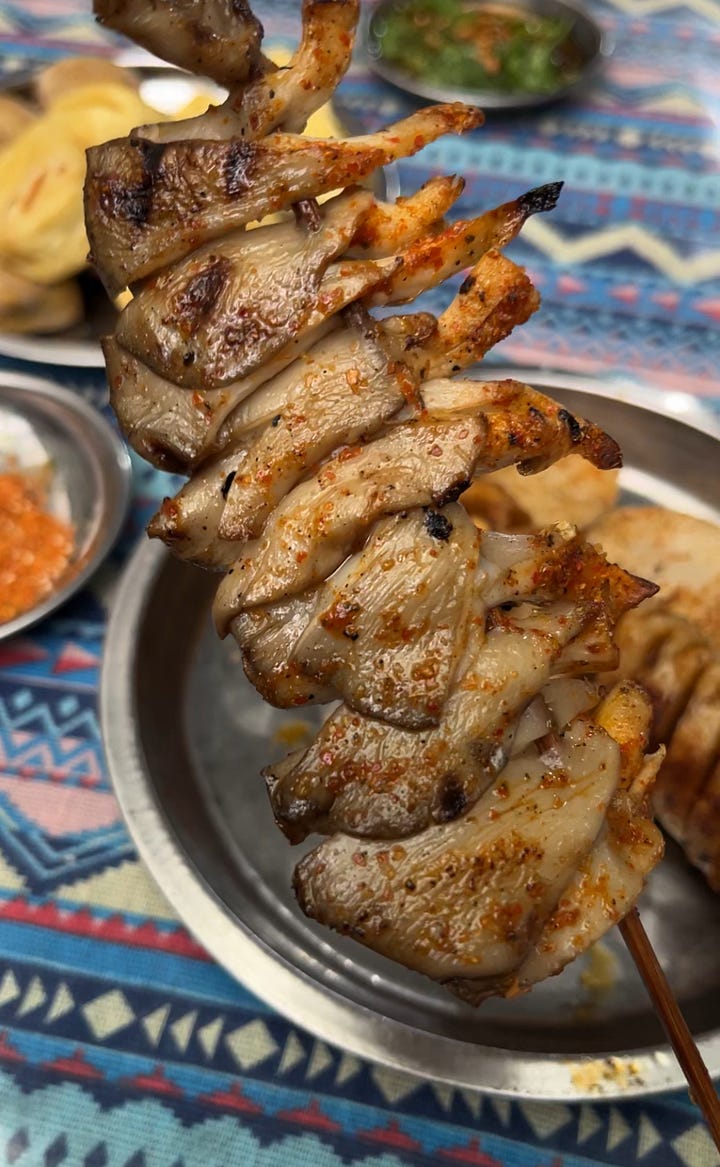
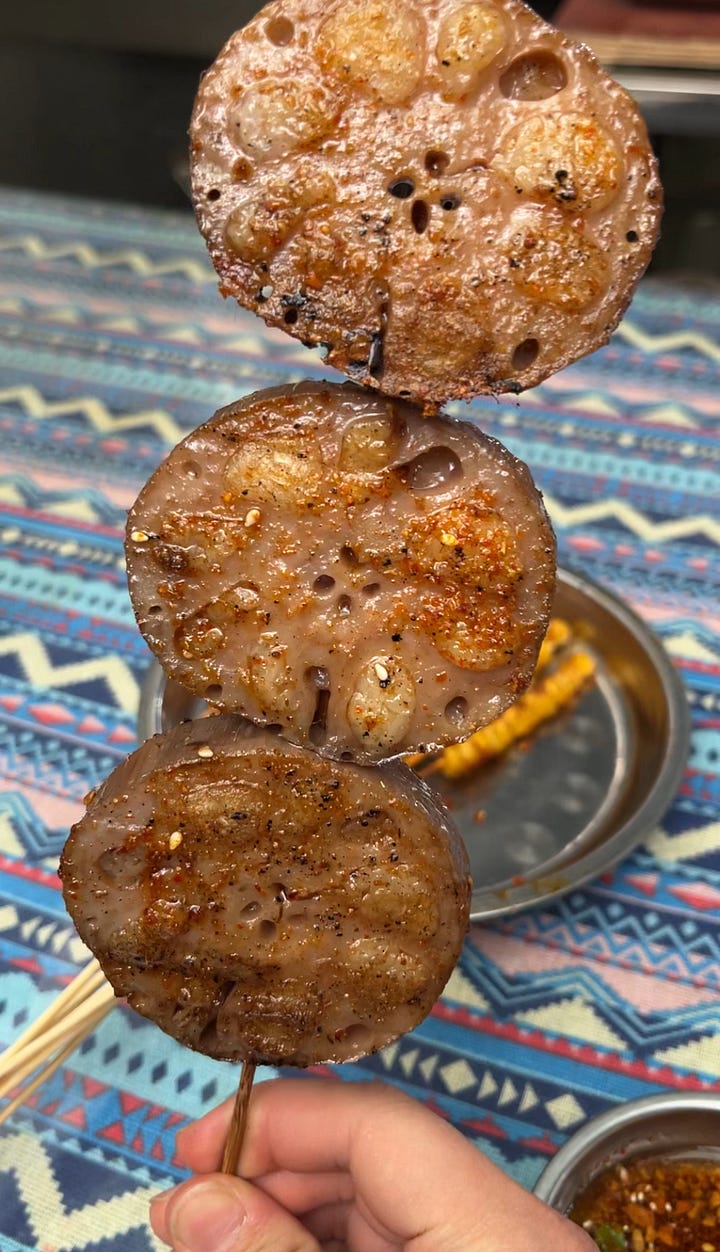
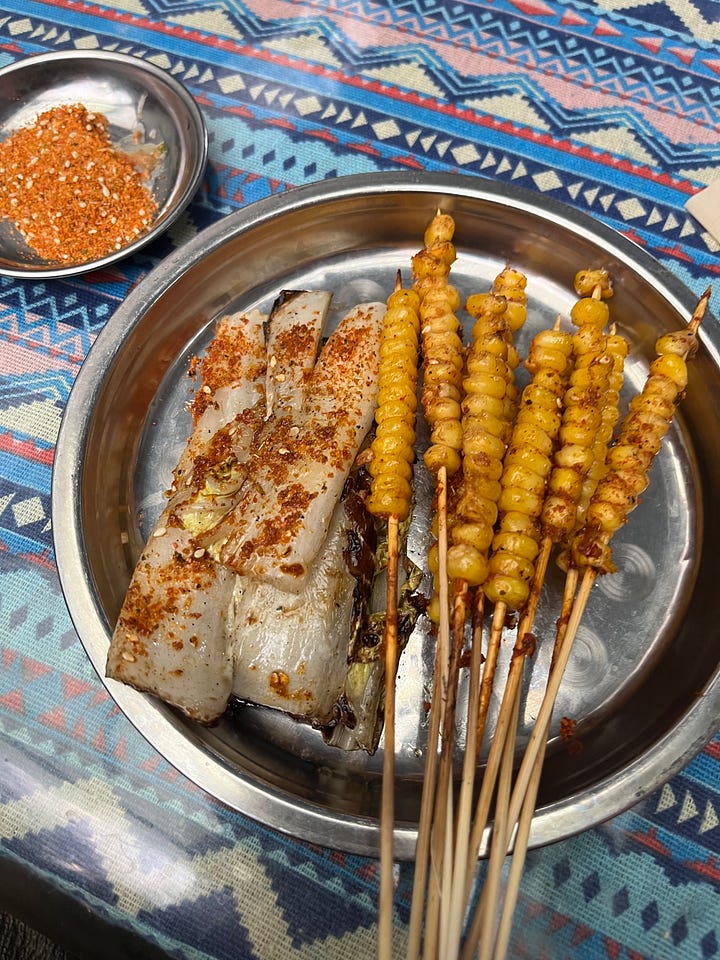
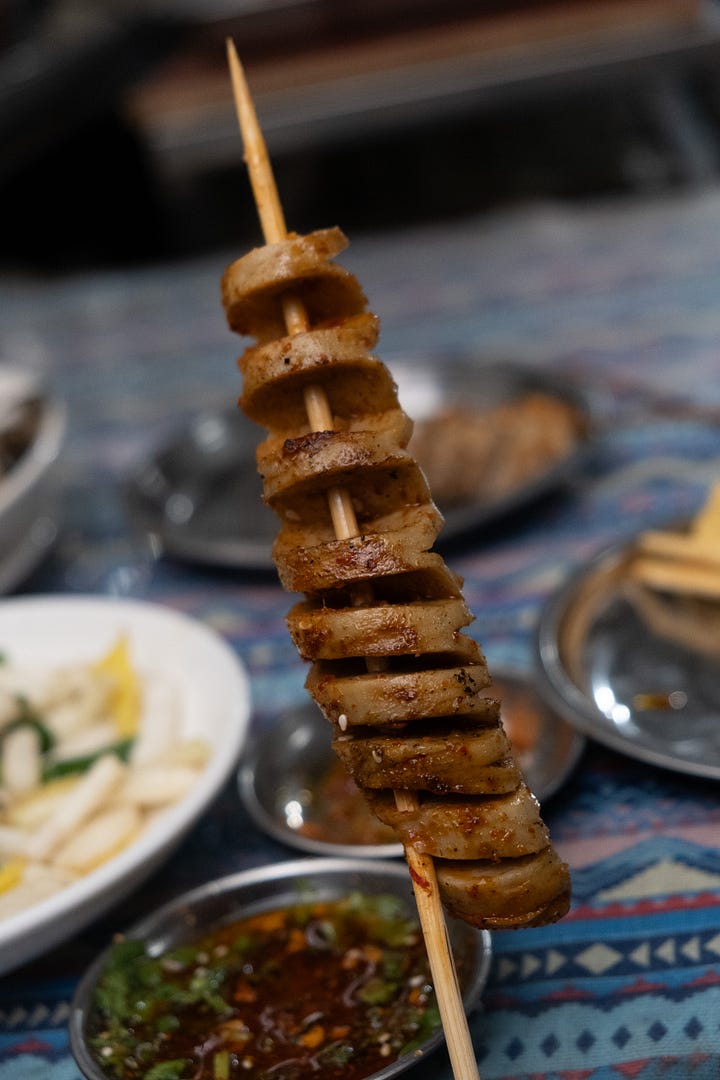
If you want to order barbecued tofu here, the owner hands you two little plates: one with a ‘dry dip’ (干碟) a powdery-coarse, fiery red blend of ground chiles and seasonings, and the other for the ‘oil dip’ (油碟), the same chiles but with the addition of sesame paste, soy sauce, a pinch of freshly chopped cilantro, and a spoonful of garlic oil. You can stir this into an unctuous, adhesive sauce.
I wanted to pack up their garlic oil and bring it home. Anyone can grill skewers, but the oil, seasonings and zhanliao, the dipping sauces, are unique to the experience, just like the sauces in hot pot, and they distinguish one vendor from the other.
Some sauces have more acidity than others. In Kunming I fell in love with a tangy, creamy fermented tofu concoction called 卤腐蘸料, made with furu (fermented tofu) and thinned with garlic oil. I also had a bracing, pungent chile dip with cilantro, garlic oil, fresh bird’s eye chiles and lime juice (yes, citrus in Chinese food!). I started to understand why these sauces were called the “spirit” of barbecue, the 灵魂.
To make the spice mix you start with Sichuan or Guizhou dried red chiles. Despite their bold color these chiles are usually more fragrant than spicy, roasted and ground to a coarse powder along with Sichuan peppercorns and aromatic herbs like fennel, cardamom, and cumin. This chile-spice mix is smoky and beguiling, but can be overbearing, so vendors add ground peanuts, sesame, and roasted soybeans and judicious amounts of MSG or jijing (chicken essence powder) and salt to balance out the flavors. The final shaokao blend is slightly clumpy, dusty red and finger-licking good.
Eating tofu in Yunnan begins with this spice mix. You rip a puffy grilled tofu in half and dab the torn side first in the sauce, then in the dry dip, so that the molten interior picks up as much seasoning as possible.

To add some more vegetables to the meal, we ordered a plate of cao ya (草芽), tapered grass shoots. Grown in mud paddies and harvested in the spring, the shoots resemble witchy fingers and taste like a cross between asparagus and wild rice shoots (jiaobai 茭白). They’re also called “elephant tusk vegetable” (象牙菜) due to their ivory color. Only available in Jianshui and the surrounding areas, they’re prized like a delicacy. They taste like the freshest, snappiest asparagus, tender and juicy and explosively fragrant when stir-fried with ginger, chiles, and green onions.


At home, I finally figured out the dipping sauces.
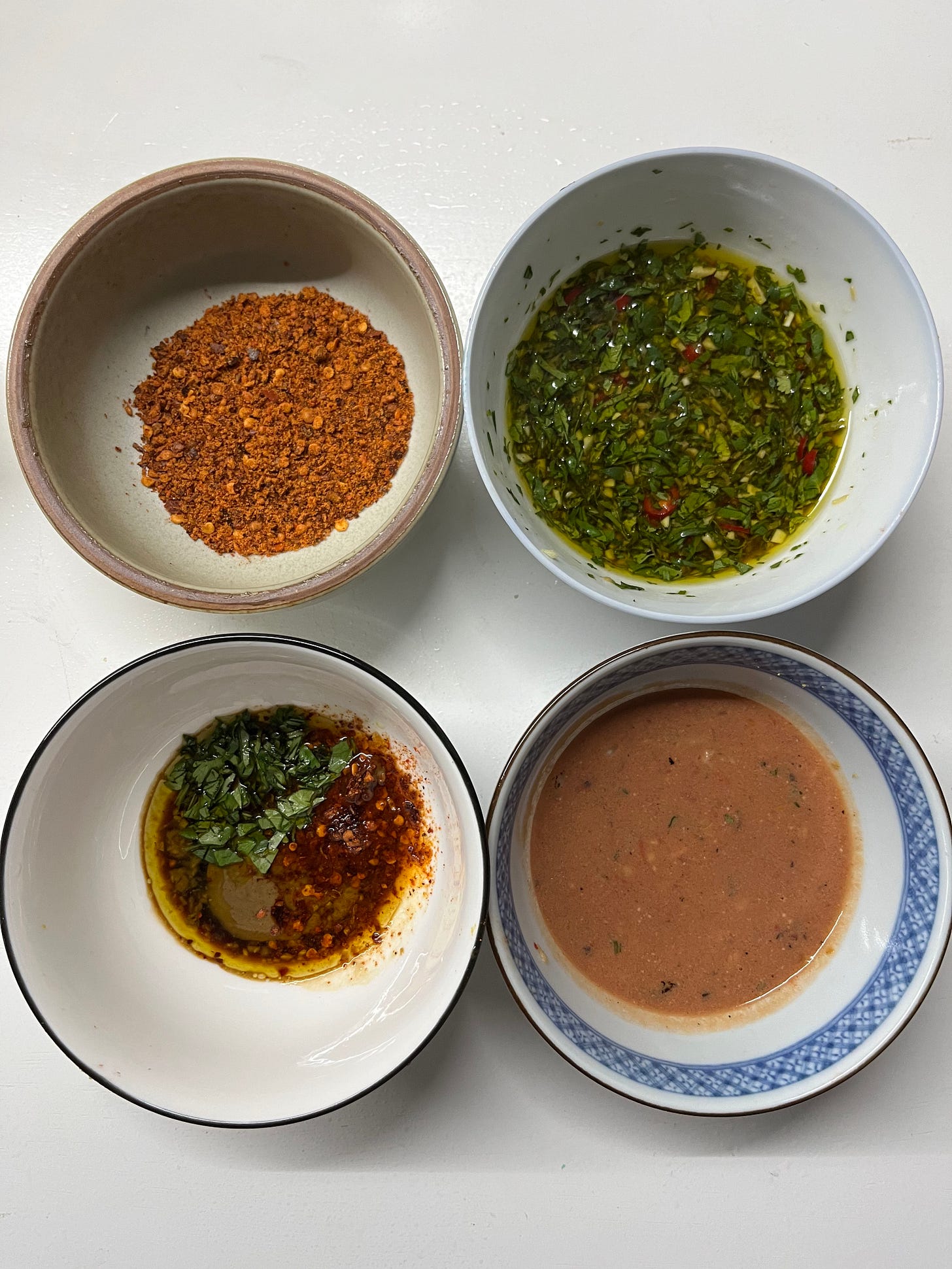
I don’t grill or barbecue, so I treat these more as versatile condiments. The garlic oil is simply minced garlic cooked slow and low in oil until it turns golden, and it adds lovely depth to any stir-fried or blanched dish. You can roast potatoes or cauliflower and toss them in the shaokao dry mix. The citrusy, zingy chile sauce could double as a salad dressing. I use the fermented tofu or sesame dip as a dip for baked tofu, and as a creamy noodle sauce. A good condiment has many possibilities.






